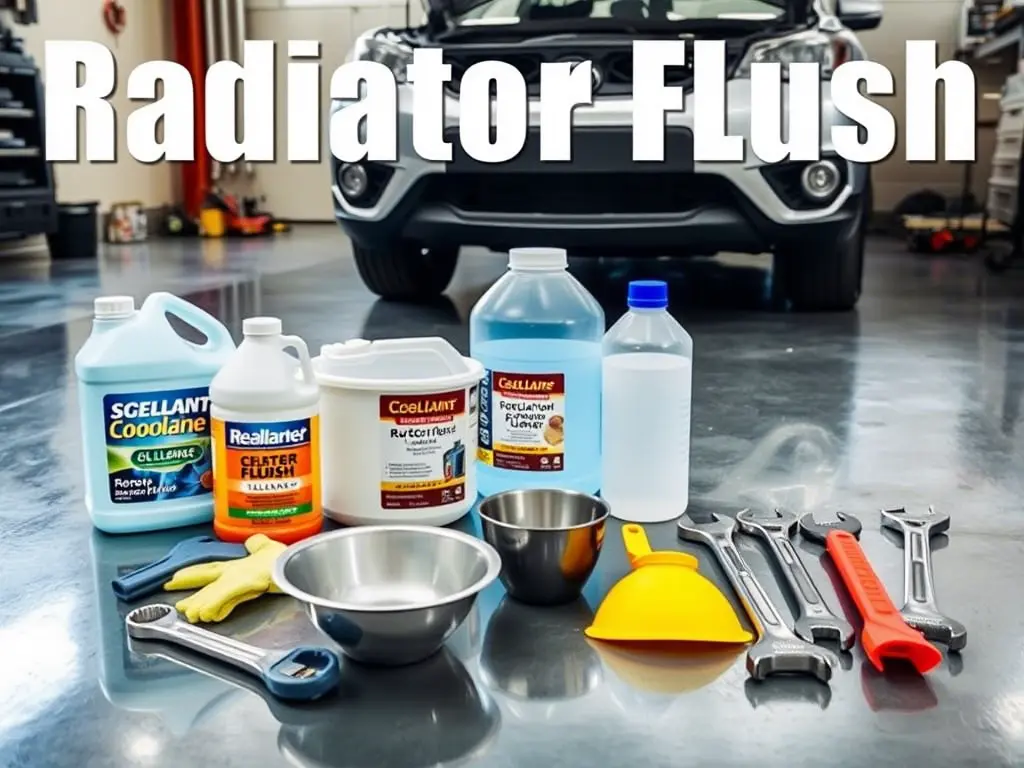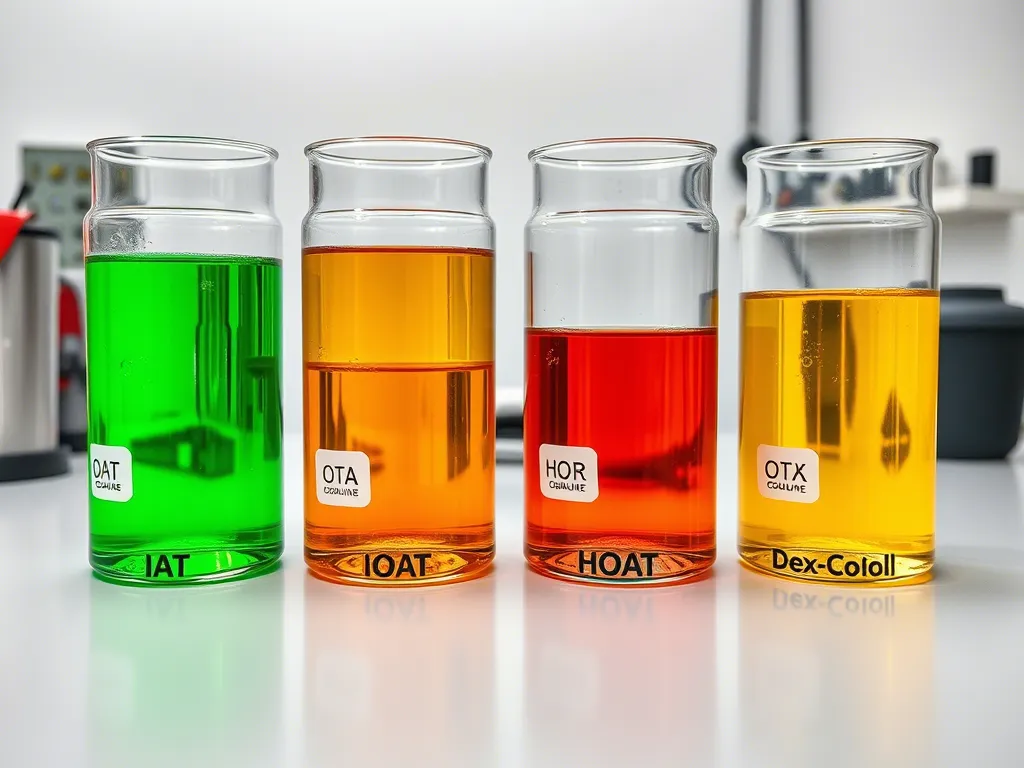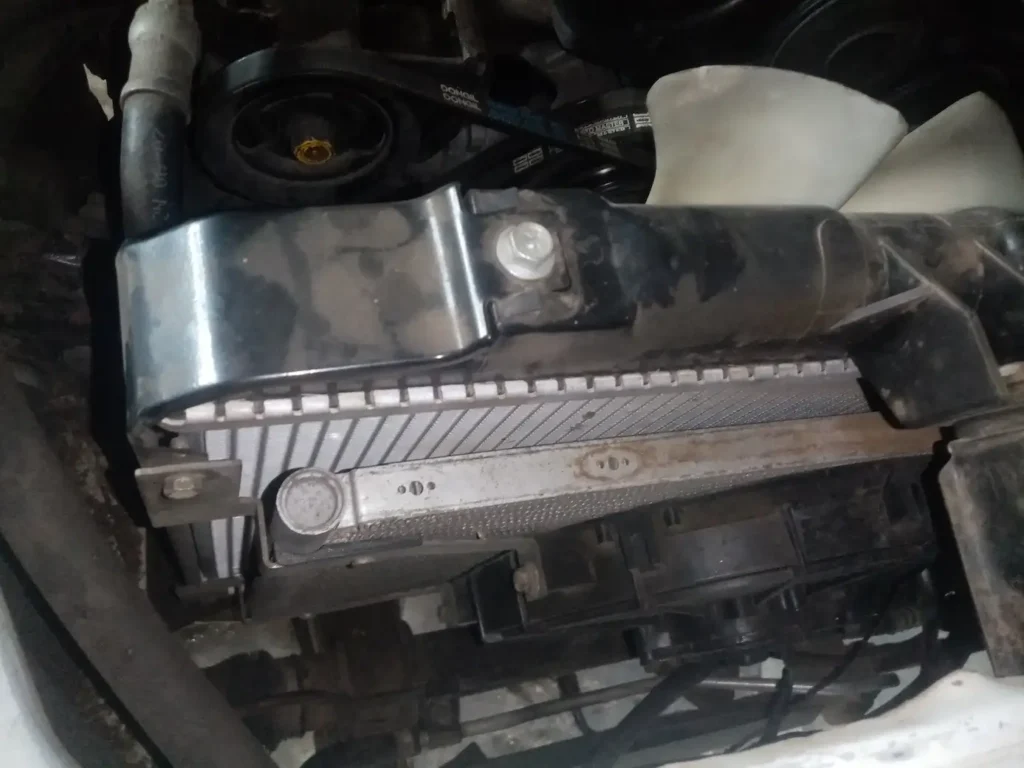I’ll never forget the metallic clunk as my engine died on Highway 95, steam billowing like a locomotive. The repair bill? $2,300 for a warped cylinder head—all because I ignored a $50 radiator flush.
Here’s what no one tells you about coolant:
- It turns toxic after 2-5 years, eating away at your engine from the inside
- Sludge builds up silently, like cholesterol in arteries
- One overheat can crack your engine block—game over
This isn’t maintenance—it’s survival.
The good news? You can flush your radiator in 90 minutes with:
- A $7 bottle of cleaner
- Basic hand tools
- Our step-by-step guide
Don’t learn this lesson the hard way like I did. Your engine (and wallet) will thank you.
Table of Contents
What’s a Radiator Flush? (And Why Your Car Can’t Live Without It)
A radiator flush is like hitting the reset button on your car’s cooling system. You drain the old, sludgy coolant—along with all the rust, scale, and gunk it’s collected—then refill it with fresh fluid.
Skip this, and you’re playing with fire (literally):
- Overheating cracks heads, warps parts, and turns small problems into $2,000 repairs
- Clogged passages force your engine to work harder, cutting fuel efficiency
- Corrosion eats away at your radiator, hoses, and water pump from the inside out

Mechanics call it the “oil change for your cooling system”—because waiting until something breaks is always more expensive than preventing it.
Fun fact: A single flush can extend your radiator’s life by years. Now that’s what I call cheap insurance.
DIY Radiator Flush: A Beginner’s Guide That Won’t Leave You Stranded
You don’t need to be a mechanic to flush your radiator – but you do need to do it right. Here’s the no-BS guide I wish I had when I first tried this.
Grab These First:
☑️ Radiator flush cleaner (Prestone or Liqui Moly work great)
☑️ 2 gallons of distilled water (tap water will ruin your system)
☑️ Fresh coolant (check your manual – get this wrong and you’ll regret it)
☑️ Drain pan, funnel, basic wrench set
☑️ Thick gloves and safety glasses (coolant burns are no joke)
The Foolproof Process:
- Cool Down Period
Park on level ground and wait until the engine is cold to the touch. I learned this the hard way when I got a face full of steam. - Drain the Old Stuff
- Find the drain plug (usually bottom of radiator)
- Position your drain pan – this stuff stains concrete forever
- Open slowly unless you want antifreeze shoes
- Flush Out the Gunk
- Fill with distilled water
- Start engine, turn heater to MAX (this cleans the heater core too)
- Let it run 10-15 minutes until the fan kicks on
- Nuclear Option (For Neglected Systems)
Add flush solution and repeat the process if your coolant looked like swamp water - The Refill
- 50/50 coolant/distilled water mix (unless you bought pre-mixed)
- Fill slowly to avoid air pockets
- Start engine with cap off to bleed air (bubbles will rise)
- Final Checks
- Look for leaks like your paycheck depends on it
- Test drive while watching the temp gauge like a hawk
Pro Tip: That old coolant in your drain pan? It’s deadly to pets and kids. AutoZone or any parts store will take it for free – just don’t pour it down the drain.
Coolant Types Decoded: Don’t Pour the Wrong One!
Picking the right coolant isn’t just about color—it’s about chemistry. Get it wrong, and you could clog your radiator, corrode your engine, or void your warranty. Here’s the real breakdown:

1. IAT (Inorganic Additive Technology) – The Old Reliable
- 🔵 Color: Bright green
- ⏳ Lifespan: 2 years or 30,000 miles
- 🚗 Best for: Pre-2000s American & Japanese cars
- ⚠️ Warning: Rare in newer cars—don’t mix with OAT/HOAT!
2. OAT (Organic Acid Technology) – Long-Life Coolant
- 🔶 Color: Orange, red, or dark green
- ⏳ Lifespan: 5 years or 50,000 miles
- 🚗 Best for: GM, VW, Toyota, and some European models
- ❌ Never mix with: IAT (can form sludge)
3. HOAT (Hybrid OAT) – The Best of Both Worlds
- 💛 Color: Yellow, turquoise, or pink
- ⏳ Lifespan: 5 years or 50,000 miles
- 🚗 Best for: Ford, Chrysler, BMW, Mercedes
- 🔥 Key perk: Silicate-free (safer for aluminum engines)
4. P-OAT (Phosphated OAT) – The Extended Lifespan Option
- 💖 Color: Pink/blue (Toyota), purple (some European)
- ⏳ Lifespan: 10 years or 100,000 miles
- 🚗 Best for: Modern Toyotas, Lexus, some luxury brands
- 💰 Costlier but worth it: Prevents corrosion longer
🚨 The Golden Rule: Check Your Manual First!
- ❌ Mixing coolants = Big trouble (gels, clogs, corrosion)
- 🔍 Look for “Global” or “Universal” coolants only if specified
- 💧 Always use distilled water for mixing (never tap!)
Pro Tip:
If your coolant looks brown or muddy, it’s breaking down—flush ASAP!
Still unsure which one’s right for your car? Drop your make/model below—we’ll help!
Radiator Flush vs. Coolant Change: The Truth Most Mechanics Won’t Tell You
You wouldn’t just rinse a greasy pan and call it clean—so why do that to your engine? Here’s the real difference between these two services:
🔄 Coolant Change (The “Quick Rinse”)
- What it does: Drains and replaces some old coolant (about 50-70%)
- What’s left behind: Sludge, rust, and debris in the engine block & heater core
- When to do it: Only if coolant looks clean and you’re pressed for time
- Cost: $50-$100 (but risks hidden corrosion)
💦 Radiator Flush (The “Deep Clean”)
- What it does: Forces out 100% of old fluid + gunk with pressurized water/solution
- Bonus: Cleans hidden buildup in water jackets, heater core, and hoses
- When to do it:
- Every 30k-50k miles
- After overheating
- If coolant looks like swamp water
- Cost: $100-$150 (saves thousands in long-term damage)
🔧 Mechanic’s Verdict:
“A coolant change is like brushing your teeth; a flush is like a dental deep cleaning. Skip the flush, and you’ll pay for it later.”
Pro Tip: If your coolant has floating debris or a brown tint, only a flush will fix it.
When Your Car Actually Needs a Radiator Flush

Forget generic mileage rules – here’s when your specific car needs attention:
📆 The Real Schedule That Matters:
| Vehicle Type | Flush Interval |
|---|---|
| Older Cars (Pre-2010) | Every 2 years or 30k miles |
| Modern Cars (OAT/HOAT Coolant) | Every 5 years or 50k miles |
| European/Performance Models | Every 3 years (check manual!) |
| Heavy Duty/Towing | Every 25k miles |
🚨 Emergency Flush Triggers:
• After any overheating episode (even if “it’s fine now”)
• When coolant looks like muddy coffee
• Before/after major cooling system work
The Truth About “Lifetime” Coolant:
Many newer cars claim 100k mile intervals – but mechanics see these systems fail prematurely. Get a professional inspection at 50k miles to be safe.
Radiator Flush FAQs
Let’s cut through the confusion. These are the real questions people ask (and the answers mechanics wish you knew):
❓ “Can’t I just ignore this until my car overheats?”
Sure – if you enjoy $2,000 repair bills. Flushing removes corrosive gunk that slowly murders your cooling system. It’s not maintenance – it’s survival.
💰 “What’s this gonna cost me?”
- DIY: About $50 (flush kit + premium coolant)
- Mechanic: $100-$150 (cheaper than a new radiator)
Protip: Skip the quick lube places – many just drain/refill without proper flushing.
🚗 “My coolant looks fine – why flush?”
That clear green liquid? It’s secretly:
✓ Losing anti-corrosion additives
✓ Building invisible scale deposits
✓ Becoming 40% less effective every 30,000 miles
⚠️ “How do I know mine needs it?” Your car will tell you:
• Temperature gauge creeping up
• Heater blows lukewarm on max
• Visible rust in the coolant reservoir
• That sweet antifreeze smell (means it’s leaking)
💧 “Can I use hose water in a pinch?”
Only if you want mineral deposits clogging your radiator like arteries. Distilled water costs $1/gallon – don’t be that guy.
The Bottom Line:
Flushing takes 90 minutes and costs less than a tank of gas. Not doing it can cost you an engine. The math is simple.
Still unsure? Drop your question below – I’ll give you the mechanic’s truth.
Final Word: Why This 90-Minute Job Saves You Thousands
Let’s be real – nobody wakes up excited to flush their radiator. But here’s what changes minds:
The first time I did this, I found chunks of rust that looked like coffee grounds. That’s when I realized – my car had been slowly suffocating.
Here’s what you’re really doing when you flush:
✔️ Resetting the clock on your cooling system
✔️ Catching small problems before they strand you
✔️ Learning your car’s language (so you notice when something’s off)
Your Next Move:
- Bookmark this guide for your next maintenance day
- Drop a comment below – First-time jitters? Success story? We read every one
- Level up your skills with these game-changers:
→ *”Best First Car: A Mechanic’s Honest Guide for Beginners, Teens, and Budget Drivers“*
→ “Car Horn Not Working? Here’s What to Do Before Panicking“
Remember: The difference between “just running” and running right comes down to these small acts of care.

Pingback: Water Is Leaking from My Car? Mechanic Explains Why & Fixes
Pingback: Best Car Temperature Gauge Guide: Normal(195°F), High & Low